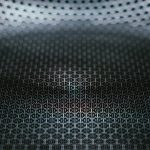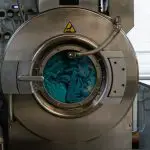Looking to bond high density polyethylene (HDPE) with fabric, but unsure which glue to use? Look no further.
This concise guide will equip you with the knowledge to make an informed decision.
Key Takeaways
- HDPE is a non-porous material with low surface energy, making it challenging for adhesives to adhere effectively.
- Surface treatment methods like corona or flame treatment can enhance the surface energy of HDPE, improving adhesion.
- Adhesives specifically formulated for bonding with HDPE, such as those containing EVA or cyanoacrylate, can improve bonding performance.
- Proper surface preparation, including cleaning and roughening the HDPE surface, is essential for successful bonding with fabric glue.
Understanding High Density Polyethylene (HDPE)
High Density Polyethylene (HDPE) is a commonly used thermoplastic known for its high strength-to-density ratio. Its properties include resistance to chemicals, impact, and moisture, making it suitable for various applications.
When it comes to fabric adhesive compatibility, HDPE presents bonding challenges due to its low surface energy, which hinders adhesion. To address this, material surface preparation is crucial. Surface treatment methods such as corona or flame treatment can enhance the surface energy of HDPE, promoting better adhesion.
Understanding the surface energy and proper material surface preparation is essential for successful bonding of fabric to HDPE. When selecting a fabric glue for HDPE, it's important to consider its compatibility with the material and the specific surface preparation required for optimal bonding.
Factors to Consider When Choosing Fabric Glue
Considering the bonding challenges posed by HDPE, selecting the appropriate fabric glue requires evaluating its compatibility with the material and understanding the necessary surface preparation for optimal adhesion. When choosing fabric glue for HDPE, it's crucial to consider the bonding techniques and adhesive selection to ensure a strong and durable bond.
High density polyethylene is a non-porous material with a low surface energy, making it challenging for adhesives to adhere effectively. As a result, the choice of fabric glue becomes critical in achieving a reliable bond.
Bonding techniques such as surface activation through methods like corona treatment or flame treatment can significantly enhance the adhesion of fabric glues to HDPE. Additionally, selecting adhesives specifically formulated for bonding with HDPE, such as those containing ethylene-vinyl acetate (EVA) or cyanoacrylate, can improve the bonding performance.
Understanding the surface preparation requirements and following the recommended bonding techniques are essential factors to consider when choosing fabric glue for HDPE. By carefully evaluating these considerations, you can ensure the successful bonding of fabric to HDPE for various applications.
Top Fabric Glues for Bonding to HDPE
When choosing fabric glue for bonding to HDPE, it's essential to evaluate the specific adhesive properties that make it suitable for the material's non-porous and low surface energy nature. Fabric compatibility, along with proper surface preparation, is crucial to ensure a strong and durable bond with HDPE.
Here are the top fabric glues that are well-suited for bonding to HDPE:
- E6000 Fabri-Fuse: This fabric glue is known for its exceptional bonding strength and is compatible with a wide range of fabrics, making it suitable for bonding to HDPE. It provides a flexible and waterproof bond, ideal for applications where HDPE's non-porous nature is a challenge.
- Tear Mender Instant Fabric and Leather Adhesive: This fabric glue is specifically designed for bonding to a variety of materials, including HDPE. It offers a quick and strong bond, making it suitable for both indoor and outdoor use.
- 3M Super 77 Multipurpose Adhesive: Known for its versatility, this fabric glue is compatible with HDPE and provides a strong, long-lasting bond. Its ability to bond to a wide range of materials makes it a reliable choice for bonding to HDPE.
When using these fabric glues for bonding to HDPE, proper surface preparation is essential to ensure adhesion. Cleaning the HDPE surface thoroughly and roughening it slightly can significantly improve the bond strength and durability.
Application Tips for Using Fabric Glue on HDPE
To ensure successful application of fabric glue on HDPE, start by thoroughly cleaning the HDPE surface and lightly roughening it to enhance adhesion. Fabric prep is crucial for a strong bond. Use a mild detergent and water to clean the HDPE surface, removing any dirt, dust, or grease. Once clean, lightly sand the surface with fine-grit sandpaper to create a slightly rough texture. This will help the fabric glue adhere more effectively.
When applying the fabric glue, follow the manufacturer's instructions for adhesive application. Apply a thin, even layer of fabric glue to the prepared HDPE surface. Avoid using too much glue, as excess adhesive can lead to a weaker bond. After applying the glue, carefully place the fabric or material onto the HDPE surface, pressing firmly to ensure good contact and bond formation.
Consider using bonding techniques such as clamping or applying pressure to the bonded materials, as recommended by the fabric glue manufacturer. These techniques can help promote better adhesion between the fabric and HDPE.
Following these application tips will help you achieve a strong and durable bond when using fabric glue on HDPE.
Best Practices for Ensuring a Strong Bond
By properly preparing the HDPE surface and utilizing appropriate pressure techniques, you can ensure a strong bond when using fabric glue.
Ensuring proper surface preparation is crucial for achieving a strong bond when working with high density polyethylene (HDPE) and fabric glue. Here are some best practices to follow:
- Surface Cleaning: Thoroughly clean the HDPE surface with a mild detergent and water to remove any dirt, grease, or residue that could hinder the adhesive bond. Dry the surface completely before applying the fabric glue.
- Compatible Materials: Select fabric glue that's specifically formulated to adhere to HDPE. Using compatible materials is essential for achieving a strong and durable bond. Always check the product specifications to ensure compatibility with HDPE.
- Even Pressure: Apply even pressure to the bonded surfaces. Use a roller or apply pressure using your hands to ensure maximum contact between the fabric glue and HDPE, promoting a strong and reliable bond.
Following these best practices will help you achieve a strong and lasting bond when using fabric glue on HDPE, ensuring the success of your project.
Frequently Asked Questions
Can High Density Polyethylene (Hdpe) Be Easily Damaged or Weakened by Using Fabric Glue?
Using fabric glue on high-density polyethylene (HDPE) can potentially damage or weaken it. Be cautious during the application process, as the wrong type of glue may not adhere properly and could cause harm.
Are There Any Specific Safety Precautions to Consider When Using Fabric Glue on Hdpe?
When using fabric glue on HDPE, follow these safety precautions: work in a well-ventilated area, wear gloves, and avoid skin contact. For best results, apply the glue evenly and let it dry completely before handling.
How Long Does It Typically Take for Fabric Glue to Fully Bond With Hdpe?
Fabric glue typically takes 24-72 hours to fully bond with HDPE. Apply it evenly, and ensure the surfaces are clean and dry. Consider temperature and humidity, as they can affect bonding time.
Can Fabric Glue Be Used on HDPE in Outdoor or High-Temperature Environments?
Yes, fabric glue can be used on HDPE in outdoor applications, but it's essential to choose a glue with heat resistance for high-temperature environments. Look for a specific HDPE adhesive that can withstand outdoor conditions and heat.
Are There Any Special Considerations for Washing or Cleaning Fabric Glued to Hdpe?
When washing fabric glued to HDPE, use a gentle cycle and mild detergent. Avoid high heat and harsh chemicals. Prioritize durability testing to ensure the adhesive holds up. Consider spot cleaning for best results.
- The Role of Nonwovens in Hygiene Products - July 11, 2025
- How to Choose the Right Nonwoven Fabric for Your Application - July 11, 2025
- Nonwoven Fabrics in Agriculture: Crop Covers and Weed Barriers - July 11, 2025







